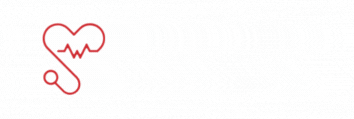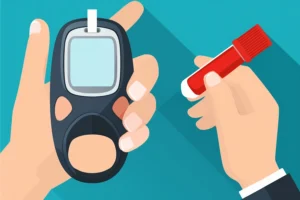When experiencing a fever or throat infection, you are often advised to avoid cold drinks and foods and instead consume warm fluids and meals. But do you follow this recommendation, or do you believe it to be a mere superstition? Have you ever wondered what science says about this advice?
In this article, we will explore the scientific reasons behind avoiding cold drinks and foods during illness.
You’ll discover how they can impact your immune response, inflammation and recovery process, and why warm fluids may be a better choice for faster healing and symptom relief.
How cold drinks affect fever and throat infections
- Cold Drinks Can Worsen a Sore Throat:
A sore throat is a common acute upper respiratory tract infection that causes inflammation of the respiratory mucosa in the throat. It can be caused by bacteria, most commonly Streptococcus or viruses, typically rhinovirus.1
Studies suggest that consuming cold substances may cause vasoconstriction, which is the narrowing of blood vessels. This can reduce blood flow to the throat, potentially slowing the delivery of immune cells needed to fight infections.2,3,4 Adequate blood circulation is crucial for healing and reduced flow to the mucous membranes of the throat may prolong recovery.
While cold drinks or foods may provide temporary relief by numbing the throat, they can also lead to increased irritation as the body works to restore warmth. Additionally, the temporary reduction in blood circulation may make the throat more vulnerable, delaying healing and increasing discomfort.
- Increases Mucus Production:
Cold stimuli can trigger the activation of a specific channel in the body called the TRPM8 channel (Transient Receptor Potential Melastatin 8 channel). This is a type of ion channel which is sensitive to temperature changes and plays a role in the sensation of cold. When activated by cold, the TRPM8 channel can increase mucus production in the airways.5
Additionally, cold exposure can damage the cilia, which are tiny, hair-like structures lining the respiratory tract. Cilia are crucial for moving mucus and trapped particles out of the lungs and throat. When cold stimuli cause structural damage to cilia, their ability to function properly is impaired. This results in poor mucociliary clearance, meaning that mucus and debris are not cleared as efficiently from the airways.6
The combined effects of excessive mucus production and impaired ciliary function can lead to mucus buildup in the respiratory system. This exacerbates respiratory discomfort by causing congestion, irritation and difficulty breathing. Therefore, the inability to effectively clear mucus from the airways can further worsen symptoms, making it harder for the body to breathe freely and comfortably.
- Causes Body Temperature Fluctuations:
During a fever, the body also attempts to regulate its internal temperature, but in a different way. Fever is typically triggered by an infection or illness, where the body’s immune system responds by releasing chemicals called pyrogens. These pyrogens, such as interleukins and prostaglandins, act on the hypothalamus in the brain, which regulates body temperature. In response, the hypothalamus raises the body’s set point temperature to a higher level, initiating a fever. In order to reach this new, higher temperature, the body employs mechanisms similar to those used during cold exposure, but with a few differences. The sympathetic nervous system is activated, leading to processes like:
a. Shivering thermogenesis: Just as in cold exposure, the body uses shivering to generate heat. Involuntary muscle contractions produce heat, raising body temperature.7
b. Non-shivering thermogenesis (NST): Brown adipose tissue (brown fat) plays a role in NST, where stored fat is broken down to produce heat without muscle contraction. This process helps raise the body’s temperature.7
The overall goal of these mechanisms during a fever is to elevate the body’s temperature to help fight off infections, as many pathogens are sensitive to temperature and may not thrive as well at higher temperatures. In contrast to cold exposure, however, fever is a controlled, temporary increase in body temperature that assists in immune function rather than trying to protect against heat loss.
However, drinking cold fluids during a fever can trigger shivering and interfere with the body’s efforts to regulate temperature. This may worsen symptoms, leading to more discomfort and prolonged recovery.
- Affects the Immune System:
Cold exposure can cause significant changes in both cellular and humoral immune responses in animals. It has been observed that cold exposure reduces the count and activity of natural killer (NK) cells, which are essential for defending against viruses and tumors.
Additionally, cold exposure can decrease the proliferation of lymphocytes, which are key immune cells involved in fighting infections. Prolonged cold exposure may also increase the production of pro-inflammatory cytokines, molecules that promote inflammation as part of the immune response. These immune changes could compromise the body’s ability to fight infections, potentially increasing susceptibility. 8
In humans, cold exposure has been shown to impair nasal immune responses, reducing the body’s defense against respiratory viruses. 9
While animal studies indicate a suppression of immune function due to cold exposure, human studies have mixed results. Some suggest a weakening of the immune system, while others indicate potential enhancements. These variations may be due to differences in study design, exposure duration and individual factors. More research is needed to fully understand how cold exposure affects immune function in humans.
- Trigger Cough:
Cold exposure can affect the respiratory system by increasing mucus production as the body attempts to protect the airways from cold. The cold air irritates the lining of the respiratory tract, triggering an inflammatory response that leads to an increase in mucus production. This extra mucus helps humidify and warm the air before it reaches the lungs, while also trapping and removing pathogens or irritants that may be inhaled.
However, excess mucus can lead to coughing, as the body works to expel the mucus, microbes, and other foreign particles from the airways.10 Coughing, in this case, is a protective mechanism to clear excess mucus and prevent it from accumulating in the lungs, where it could lead to infection or inflammation.
For individuals already suffering from a cold or respiratory infection, exposure to cold air can worsen the irritation in the airways, making coughing more frequent or severe.
Conclusion
In conclusion, avoiding cold drinks and foods during a fever or throat infection is supported by scientific reasoning, as cold exposure can negatively impact the body’s immune response and prolong recovery. Cold substances can worsen a sore throat by reducing blood flow, leading to slower healing and may increase mucus production and impair the function of cilia, worsening respiratory discomfort.
Additionally, drinking cold fluids during a fever can disrupt the body’s efforts to regulate temperature, making the symptoms more severe. Cold exposure can also impact the immune system, potentially weakening its ability to fight infections. Lastly, cold exposure can trigger coughing by increasing mucus production and irritating the airways, further aggravating symptoms for those already suffering from respiratory infections.
It is important to note that while some people believe that drinking cold beverages directly causes throat infections, this is not accurate. Infections occur due to viruses or bacteria, not cold drinks themselves. However, the cold can cause vasoconstriction, reduce immune response and irritate the throat mucosa, which may increase the likelihood of developing infections. Therefore, consuming warm fluids and avoiding cold exposure during illness can help ease symptoms, support the body’s immune response, and promote quicker recovery.
References
- Kenealy T. Sore throat. BMJ Clin Evid. 2014 Mar 4;2014:1509. https://pmc.ncbi.nlm.nih.gov/articles/PMC3948435/
- John T. Shepherd, Nancy J. Rusch, Paul M. Vanhoutte. Effect of cold on the blood vessel wall. General Pharmacology: The Vascular System. 1983;14(1):61-64. https://www.sciencedirect.com/science/article/abs/pii/0306362383900642
- Abdulrahman Ahmad Alnaim, Hussain Adil Al Ghadeer, Khalid Al Noaim, Muneera Alabdulqader et al. Parental practice and attitude toward cold beverages and common cold among children. 2023;57(1). https://www.maejournal.com/volume/SMJ/57/01/parental-practice-and-attitude-toward-cold-beverages-and-common-cold-among-children-63e2aa0e77744.pdf
- Cleber E. Teixeira, Clinton Webb. Cold-Induced Vasoconstriction: A Waltz Pairing Rho-Kinase Signaling and α2-Adrenergic Receptor Translocation. Circulation Research. 2004;94:10. https://www.ahajournals.org/doi/10.1161/01.RES.0000131755.49084.04
- Li, M., Yang, G., Zhou, X., Tselluyko, S., & Perelman, J.M. The pathophysiological mechanisms underlying mucus hypersecretion induced by cold temperatures in cigarette smoke-exposed rats. International Journal of Molecular Medicine. 2014;33:83-90. https://www.spandidos-publications.com/10.3892/ijmm.2013.1535
- D’Amato M, Molino A, Calabrese G, Cecchi L, Annesi-Maesano I, D’Amato G. The impact of cold on the respiratory tract and its consequences to respiratory health. Clin Transl Allergy. 2018 May 30;8:20. https://pmc.ncbi.nlm.nih.gov/articles/PMC6031196/#Sec2
- van der Lans AA, Boon MR, Haks MC, Quinten E, Schaart G, Ottenhoff TH, van Marken Lichtenbelt WD. Cold acclimation affects immune composition in skeletal muscle of healthy lean subjects. Physiol Rep. 2015 Jul;3(7):e12394. https://pmc.ncbi.nlm.nih.gov/articles/PMC4552515/
- K. M. Brenner, J. W. Castellani, C. Gabaree, A. J. Young, J. Zamecnik, R. J. Shephard, P. N. Shek. Immune changes in humans during cold exposure: effects of prior heating and exercise. Journal of Applied Physiology. 1999;87(2):699-710. https://journals.physiology.org/doi/full/10.1152/jappl.1999.87.2.699
- Huang, Di et al. Cold exposure impairs extracellular vesicle swarm–mediated nasal antiviral immunity. Journal of Allergy and Clinical Immunology. 2023;151(2):509 – 525.e8. https://www.jacionline.org/article/S0091-6749(22)01423-3/fulltext
- Harvard Medical School. That nagging cough. Harvard Health Publishing. Published on April 7, 2022. Accessed on March 18, 2025. Available from: https://www.health.harvard.edu/staying-healthy/that-nagging-cough




